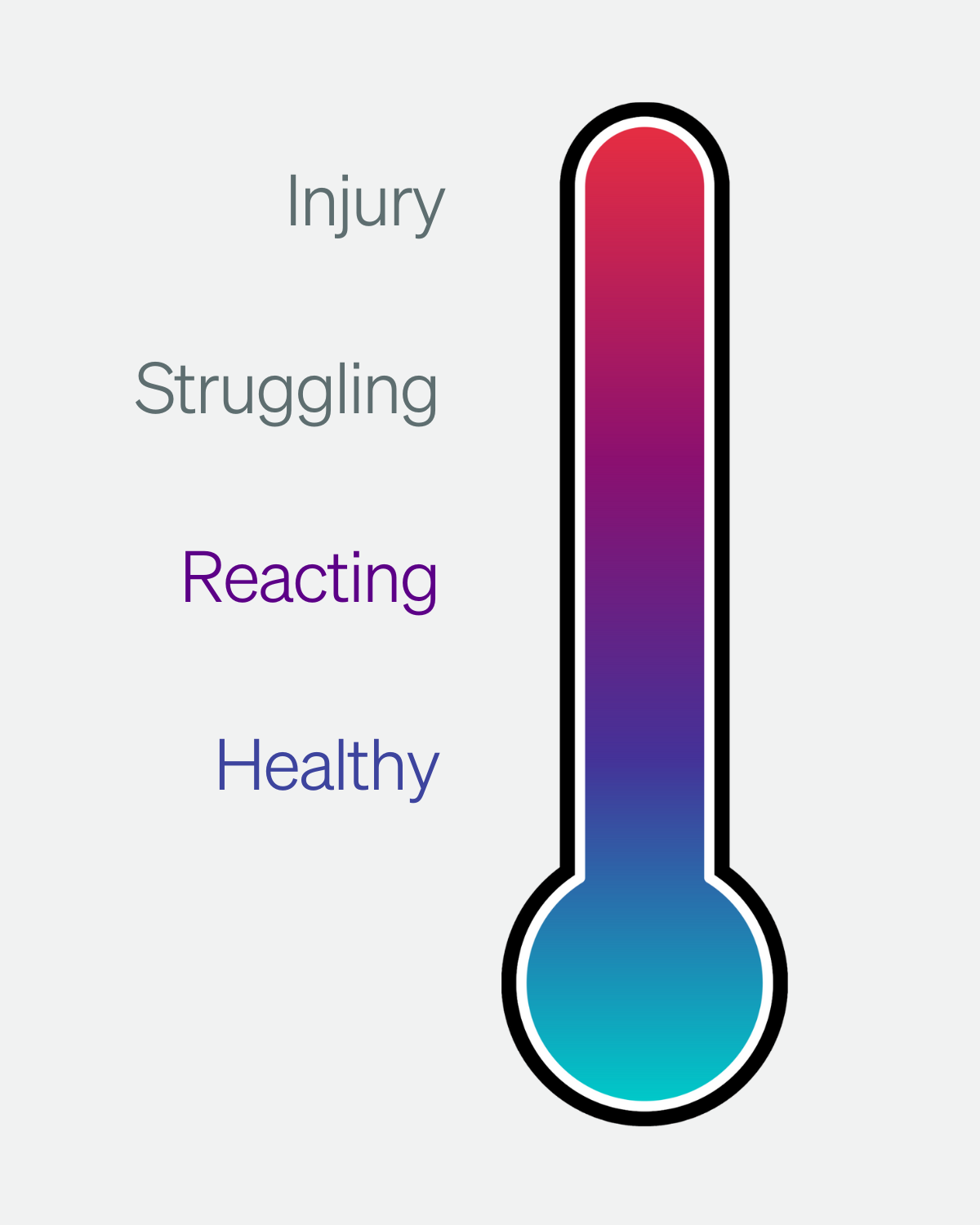

Change is a fact of organisational life. Whether it is the introduction of a new system, a restructure, or a shift in strategy, every change creates a degree of stress. Some stress is normal, and it can even be healthy, as people react and adapt to new circumstances. But without the right support, that stress can escalate into harm, leading to psychological injury and lasting impacts on both people and business performance.
We’ve all heard stories of poor change management and the impact it’s had on people. Protecting psychological health at work is not just about looking after individuals, but it’s about creating the conditions that enable sustainable organisational outcomes.
When we talk about psychological health, it is useful to think about it as a continuum. At one end, people feel well and capable, able to cope with everyday challenges. A little further along the spectrum, people are reacting – experiencing a normal, short-term response to stress. Left unmanaged, that reaction can progress into struggling, where the risks of harm begin to increase. And at the far end lies psychological injury, where stress has tipped into significant and lasting damage.

Understanding psychosocial hazards are central to supporting psychological health. Hazards arise from aspects of work design, environment, or relationships that have the potential to cause harm. They might include poorly defined roles, excessive workloads, lack of communication, or inadequate involvement in decisions. They also emerge when leaders are not equipped to support their teams, or when uncertainty leaves people unclear about their future responsibilities.
Not only is how we manage change its own potential hazard, change often amplifies other hazards. Even well-intentioned initiatives can heighten stress if they are not managed carefully, creating confusion, disengagement, or a loss of trust.
Until recently, psychosocial safety was often treated as best practice rather than a necessity. That has shifted with legislation across Australia now requiring organisations to actively manage psychosocial hazards, with significant consequences for failing to do so. The most important of these is the harm to employees’ wellbeing. But the business costs are also real with financial claims, rectification activities, and the risk of reputational damage that can erode trust among employees, customers, and stakeholders.
Because change always brings some level of stress, organisations need to be deliberate in the way they manage psychosocial risks. Effective change management provides a practical framework for doing so.
Our change approach works with clients to align proven change practices with to help control hazards. We start by understanding the nature of the change – what is happening, why it matters, and what risks it might introduce, then consider the impact on people and identify where hazards are most likely to emerge.
Strategies are then developed to reduce uncertainty and support adoption. This might involve broad consultation to bring people into the process, clear communication to prevent misinformation, equipping leaders with the skills to provide support, or giving employees the training and tools they need to feel confident. Importantly, organisations need to monitor the effectiveness of these strategies and adapt as required to ensure people remain supported throughout the transition.

While legislation compels organisations to act, the opportunity is to go further. Embedding psychosocial safety into the way change is delivered both reduces risk and builds trust, resilience, and engagement. When people feel safe and supported, they are better able to contribute fully, and the likelihood of success increases.
At Escient, we see psychosocial safety as inseparable from effective change management. Change will always bring stress. Our role is to ensure that this stress does not tip into harm but instead becomes a catalyst for healthier, more sustainable ways of working.
Supporting people through change is both the right thing to do and the smart thing to do.